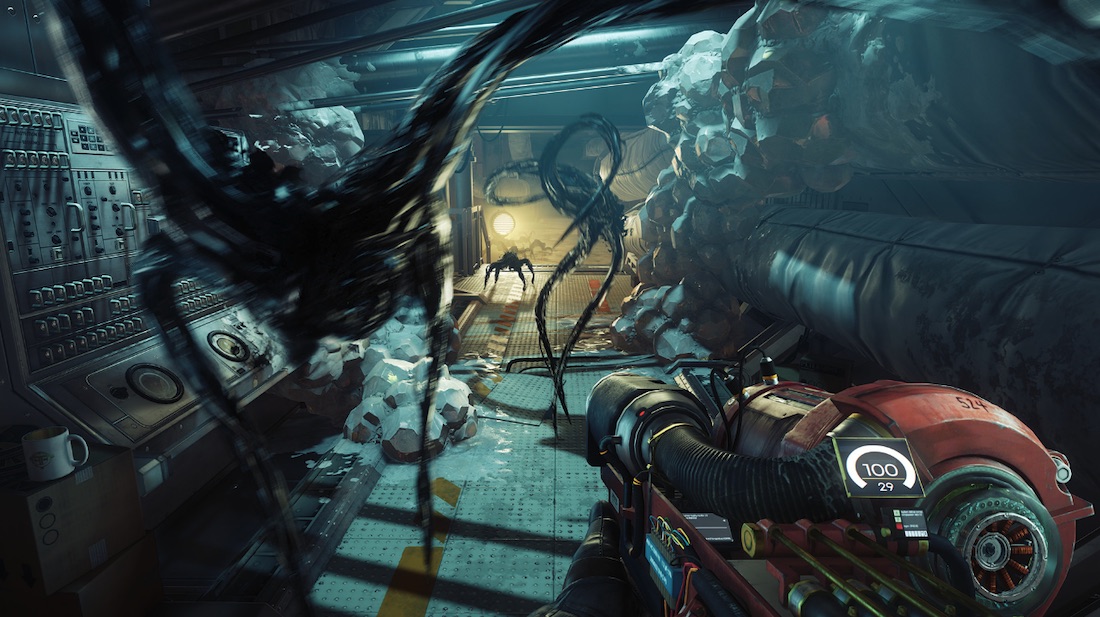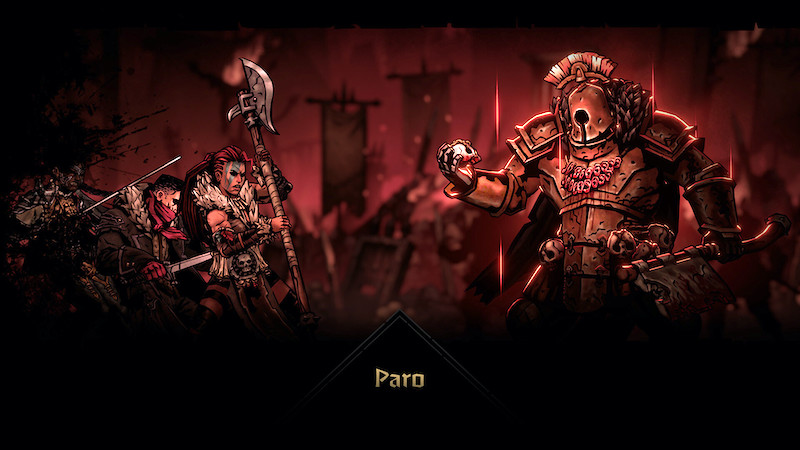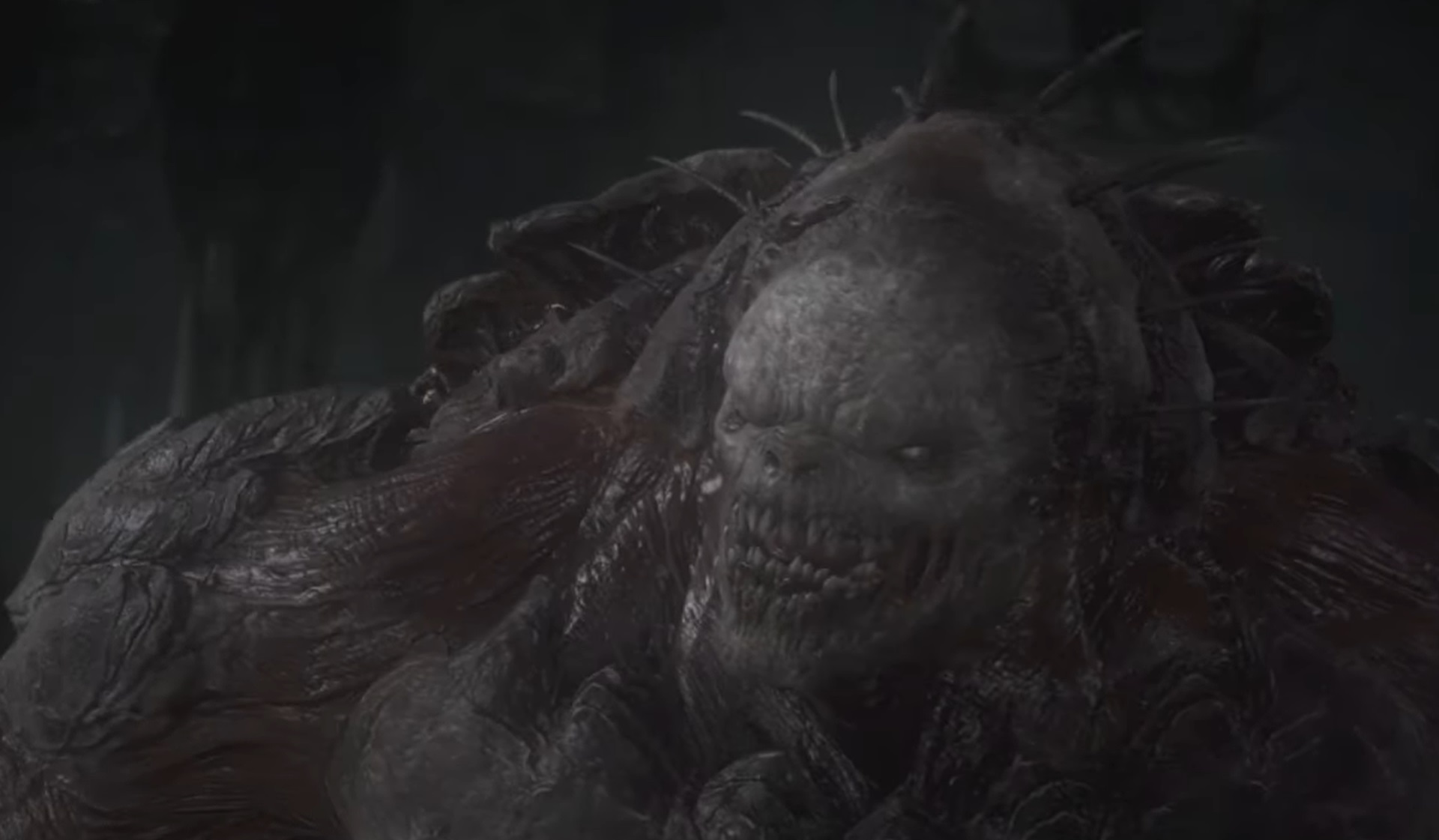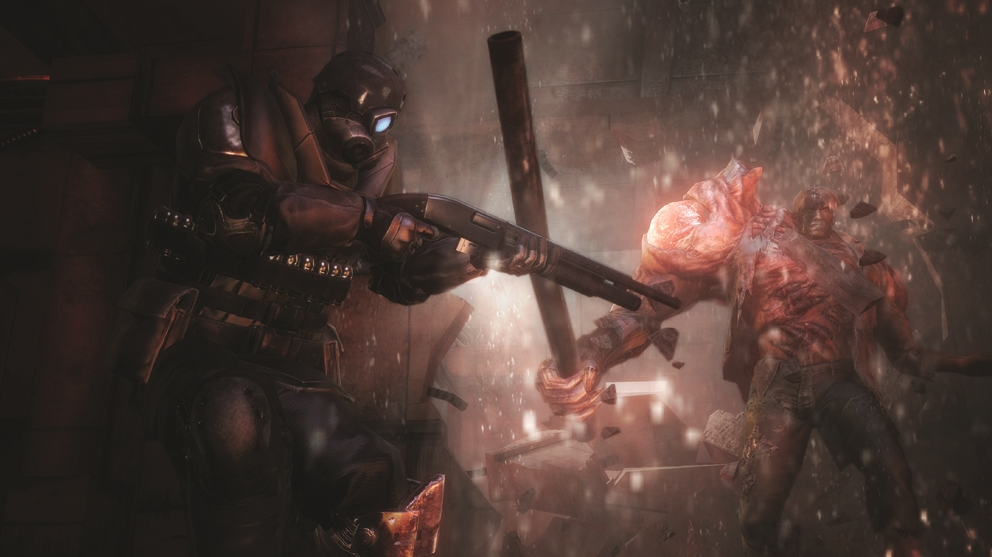
Monster Mania: The Versatile Horrors of Prey’s Mimics
Monster Mania is a weekly column celebrating the unique and varied monster designs in horror gaming.
Spider-like enemies are the FPS starter pistol of the monster world. Please stick with me. Like an FPS starting pistol, these relatively weak enemies are abundant and deal minor damage. They serve as a low-level threat while players familiarize themselves with the mechanics of a game. And just as players will quickly substitute their pistol for an SMG or shotgun once they grasp how shooting works, these weaker monster types are quickly cast aside in favor of more deadly enemies for the player to combat. There are, of course, exceptions to that rule. I already covered the Half-Life universe’s hoppy headcrabs, and rather than highlighting another similar spider-like enemy, it’s time to detail what is an evolution of the monster type both in deadliness and versatility.
I am, of course, talking about Prey 2017’s Mimics. Developer Arkane Austin shook things up with their reboot of the middlingly received original Prey from 2006. Arkane’s abandoning the original game’s linear action nature, favoring an open immersive sim world, is the most notable change to the IP. And in typical Arkane fashion, the monsters residing within the Talos 1 station are methodically designed to complement this immersive sim approach.

From a glance, there’s very little about the shadowy, spider-like creature that seems all that unique. But as with the best shapeshifters, there’s more to Mimics than meets the eye. Mimics’ most notable departure from Half-Life‘s headcrabs is their ability to shapeshift into everyday items scattered around the station. The player’s introduction to Mimics involves a Talos 1 scientist picking up a coffee mug he mistakes for his own, only for it to reveal itself and proceed to crawl down the scientist’s throat, giving an entirely new meaning to “How do you take your coffee?” This introduction to Mimics is shocking and informs the player that taking any item at face value in Prey can result in a nasty surprise.
By weaponizing everyday items, Prey has a level of constant tension that permeates every corner of Talos 1, which is unparalleled by immersive sim standards. These hidden threats can quickly make seemingly manageable encounters spiral out of control, especially on more complex difficulties. For example, entering an area occupied by two patrolling Phantoms can be manageable. However, there were several maddening times when I survived an encounter by the skin of my teeth, only to have a nearby coffee cup reveal itself as a Mimic, which would proceed to deal just enough damage to kill me.
Arkane’s deployment of Mimics makes them the rare monster type that is just as deadly and recurs throughout the player’s entire time with Prey. When you pair Mimics shape-shifting trickery with their intuitive behavior scripting, they become a more unpredictable threat than any of the other denizens on the station. Occasionally, the player will stumble upon Mimics “naked” or in their natural spider-like form. Upon sensing the player, Mimics scrambles around an environment before taking on a new form. If the player is quick enough, they can follow a Mimic and see which item they shift into. However, during combat encounters with other enemies, Mimics will reposition and find new ambush points within the environment, away from the action. This reinforces not only their deadliness but a level of fear when approaching each environment or set-piece within Talos 1.

The sense of paranoia players feel when exploring Prey’s environments results in hours of swinging their wrench wildly at objects on the off chance of killing a mimic. After a few hours of exploring the station, the player will stumble upon a psychoscope, essentially a research camera for studying Typhon threats. Initially, the scope cannot identify shape-shifted Mimics or Poltergeists (did I mention there are Poltergeists? Because yeah, there are space ghosts). Still, with the right upgrade, it can detect concealed Mimics. Sure, this may undo some of the tension mentioned above that Mimics instill, given their penchant for ambushes, but that’d be a disservice to Arkane’s utilization of them. Rather than this nerfing Mimics, it allows the player to feel as if they have the upper hand while still being susceptible to the chaos that can ensue during combat.
I may know that a Mimic is in a specific environment, but their ability to scurry away and regroup while I’m preoccupied with combat remains an example of their versatility. While I can’t say that the rest of Prey‘s monsters are nearly as memorable, the Mimics remain intimidating little critters and reflect Prey 2017’s immersive sim focus by being just as reactive to player choice.
For more horror game reviews, opinions, and features, check out DreadXP.




